Maritime collection

The Knysna Museum's maritime collection tells the stories of the Port of Knysna, and of the Thesen Line, which operated from here
To the early inhabitants of the Cape, timber was essential for housing, transport, heating, and ship building. The Governors of the Cape - both Dutch and British - knew of the abundant forests along the South Coast, but the mountains and gorges of the area made them inaccessible. If the forests were to be exploited successfully, the obvious solution to transport the cut timber would be by sea - if they could find a safe harbour for the ships.
The Knysna Estuary (Knysna Lagoon) might have been a possibility, but The Heads seemed too treacherous. Sailing ships might wait for weeks for the right combination of wind and tide to carry them over the bar and into the calm waters of the estuary, so most ships’ captains preferred Plettenberg Bay as a safer option for loading their cargoes of logs.
But they were wrong: the open roadstead at Plett was too exposed to winds and swells.
The Knysna River and its estuary had to be the answer, and so in 1795 the British Governor, Lord Macartney, sent out expeditions to explore the coast and report on the possibility of establishing a safe harbour in the Knysna estuary.
As a result of detailed surveys by both mariners and adventurers, the port of Knysna was founded, and a pilot was appointed to ensure marine safety.
The Port of Knysna: a brief history
Knysna’s recorded history goes back only as far as about 1760, when the first European explorer’s came to the area. But Middle Stone Age deposits prove that Knysna has been inhabited for tens of thousands of years - from the time when modern human behaviour began to emerge.
The origin of the name is uncertain. It might have come from the Khoi ‘xthys xna’ (meaning the ‘place of timber’), but there is no consensus in this regard.
James Callander - who drew the first map of the Knysna Lagoon - mentioned the ‘Nysna River’ in an early letter to Lord Charles Somerset, the Governor of the Cape Colony, but the modern spelling (‘Knysna’) seems to have been adopted quite soon after that.
Many places associated with water in other parts of Africa have names that sound similar to Knysna: the old name for Lake Malawi was Lake Nyasa, and Webster’s Universal Dictionary defines the word nyanza as a noun - ‘(African): An expanse of water, as a lake or wide river.’
1770 - The colonial government proclaimed the farm Melkhoutkraal, and granted it on loan permit to Stephanus Terblans.
1798 - James Callander made the first map of the Knysna Estuary (Knysna Lagoon) The indigenous yellowwood - the kalander or Podocarpus falcatus)
1804 - George Rex (definitely not the illegitimate son of King George III of England - although some people once thought he might have been) bought Melkhoutkraal and settled there. The farm was in ruins. It had been burned down in 1802 during the frontier wars, and was plundered shortly before Rex arrived. The enormous commercial potential that he saw in the local forests, however, was sufficient incentive for him to stay, and he soon began lobbying the Government to declare the Knysna river a port.
1817 - Sir Jahleel Brenton, the Naval Commissioner at Simonstown, strongly urged the government to establish families at the Knysna to ‘make experiments in the cultivation of hemp,’ and for the exploitation of the forests, where there was ‘a sufficient quantity of fine timber to build a whole navy’. The government assented, and the first ship to attempt the entrance was the Emu, but she floundered in the river mouth (The Heads). Two months later, the HMS Podargus entered safely. In September, Capt. Robert Wauchope, who commanded HMS Eurydice, completed a survey of the Knysna River. He submitted it to Sir Jahleel, and included suggestions for the positions of beacons, buoys and a pilot’s house.
1818 - John Gough was appointed the first permanent pilot at the Knysna. He was responsible (amongst other things) for the safe passage of shipping in The Heads.
1819 - The Adolphus floundered because Gough wasn’t at his post, and his inexperienced assistant had hoisted the signal to enter, instead of the signal to remain at sea and wait for conditions in The Heads to improve.
1820 - A naval dockyard was established on the land now used as the Featherbed Ferry terminal. It was built largely of wood, would burn down twice, and was finally closed after only five years. John Gough was fired from his post as Pilot because he was too often absent from his post. Thomas Flinn took over for five months, and was then replaced by Cornelius Nielson.
1821 - Edward Wallace was appointed Pilot. In March, Sir Jahleel Brenton secured a government grant of 80 acres of land for laying out a village on the banks of the river. George Rex was strongly opposed to the plan, and only agreed to it after the government offered to remove a lien of 20 acres which it held on each of his farms.
1825 - Plans were drawn up for the establishment of the village of Melville, although title deeds would only be drawn up in 1862, when the Admiralty transferred the land to the Colonial Government. The village lay to the west of what is today Long Street. It was named in honour of Henry Dundas, the 1st Viscount Melville (1742 - 1811), who was at that time Treasurer of the Navy in Britain. Edward Wallace retired as pilot, and was replaced by John McKenzie Johnson.
1826 - George Rex began building his ship Knysna - a brig built entirely of stinkwood. (There’s a model of her in our Maps & Models room). The slipway on which she was built was also made of stinkwood, but it became hidden by shrubs and reeds over time. When it was re-discovered in the 1950s, it was dismantled, and its timber used to make chairs for the Divisional Council Chambers in Knysna.
1827 - The port establishment at the Knysna River was de-proclaimed, and pilot Johnson left the village. John Rex acted as an unofficial and voluntary pilot for the next 30 years.
1830 - On the 27th June the Luna was wrecked at The Heads.
1839 - George Rex died. His grave stone was inscribed: ‘In memory of George Rex Esq., Proprietor and Founder of Knysna. Died 30 April 1839’. The grave is situated in in lower Old Place, just south of the N2.
1841 - The ship Sovereign was wrecked while trying to leave The Heads.
1845 - John Sutherland (son of Lieutenant Colonel John Sutherland, who had bought many of George Rex’s properties from his estate) began laying out the village of Newhaven on a portion of the farm Melkhoutkraal. The village lay east of Long Street, and between Long Street and the Rectory (now the junction between Main Road and Waterside Road).
1855 - The ketch Musquash, a trading ship that belonged to Thomas `Skipper’ Horn, owner of St George’s Tavern (now the Royal Hotel) was wrecked at Coney Glenn. Horn employed John Benn, who was then a shipwright living at Mossel Bay, to direct salvage operations. Although Benn arrived too late - Musquash broke up in heavy seas before he he made it to Knysna - he decided to settle here, and accept a contract to build a 60 ton schooner, the Rover, for Horn.
1856 - The Widow Wentworth opened a school. Although it provided only rudimentary education, it was described as admitting `middle and upper class girls’. By the end of 1857, there were 8 pupils - three of whom were boarders.
1857 - The first formal school was built and opened behind St George‘s Church.
1858 - With an increase in shipping, and at the request of the local people, magistrate James Fichat wrote to the colonial secretary requesting the re-establishment of the post of pilot at The Heads. He recommended John Rex (son of George). This request was granted, but John died only three days after news of his appointment reached him. William Jackson was appointed in his place. In August, the 189 ton Zulu became the first steam ship to enter the harbour. The brig Helen was wrecked at The Heads. The Public Library was officially opened on the 4th of June: its hours were 9:00 am to 10:00 p.m. every day, including Sundays.
1859 - The Magnolia was wrecked on the Western Head. The master of the ship blamed the pilot (Jackson) for the accident, but a board of inquiry found this to be untrue, and ruled that the skipper himself had been negligent. Jackson was exonerated, and remained in his post at Knysna until 1865, when he left become assistant harbour master at Table Bay. The Gaol (today the part of the Knysna Museum) was opened. It was the Colonial Government’s first public building in Knysna.
1863 - In April, the 30 ton schooner Munster Lass went down at The Heads.
1867 - John Benn completed his second ship, the 50 ton schooner, Annie Benn. Only the third ship to be built at the Knysna, her launch attracted a party of between 400 and 500 people. She was wrecked three years later at Mossel Bay. George Bruce took over as pilot from James William Miller (who had been appointed on Jackson’s departure in 1865, and who was later to settle at, and give his name to Miller’s Point in False Bay). Bruce was paid a salary of 40 pounds per annum, and although he remained in the position of pilot, the harbour master’s office was abolished.
Prince Alfred, the Duke of Edinburgh (son of Queen Victoria) arrived in September for an elephant hunt aboard HM sloop Petrel. He spent one night of his week-long visit at St George’s Tavern, which is how it earned the name ‘The Royal Hotel.
Until now, loading and unloading of ships had been extremely difficult in the Estuary. Lighter pieces were loaded onto rafts or small boats and rowed to shore, but for heavier cargo, the ships were beached on the sand banks at high tide, and loaded or off-loaded at low tide. The Colonial Government wasn’t interested in helping to resolve the problem, so Skipper Horn decided to build a stone jetty at his own expense, and with help from other local businessmen. This jetty was completed in 1867, and served Knysna until 1883 when a New Jetty, also known as the Government Jetty, was built on Thesen’s Island. The Knysna Yacht Club would eventually be built on Skipper Horn’s jetty.
1868 - John Benn was appointed Pilot.
1869 - The Thesen family made their first visit to Knysna aboard their schooner Albatross. They had been en route for New Zealand, via Cape Town, when their ship was damaged in a storm off Cape Agulhas. They returned to Cape Town for repairs, and were offered a charter to bring goods to Knysna.
At that time, there were very few ships available on the South African coast. Most had been recalled to Europe due to the possiblity of war between Germany and France.
The Thesens undertook a number of charters to Knysna, and finally decided to here in 1870.
On the 7th of February The Hon. Henry Barrington (owner of the Portland Farm, bought from Thomas Duthie) decided to burn his lands after a month of unrelenting drought and heat. The fire quickly raged out of control, and the devastation was immense. By the 9th it had spread as far as George and Humansdorp, where 20 homesteads were gutted, and 27 people lost their lives. Much wildlife and live stock was destroyed, as were many hectares of forest and farmland. Portland itself was burnt to the ground, and the town of Knysna was only saved when the wind shifted to the west at the last moment. This was the Great Fire of 1869.
1876 - While out searching for pebbles for his ostriches, the farmer Hooper, of Ruigtevlei, discovered a gold nugget in the river at Karawater. He took it to the village where the chemist William Groom analysed it and confirmed the find, and also showed it to CF Osborne, the Government Road Engineer. Osborne sent the nugget to the Government, which granted 100 pounds for further exploration.
1877 - John Benn died and was replaced as pilot by his son, John II, who had been his father’s assistant for nine years. He would serve in this post for the 35 years.
1880 - In order to control the gold diggings, John Barrington (of Portland, and the son of Henry) was appointed Government Mining Commissioner. Maxwell Jackson was appointed magistrate at Knysna. His stern, authoritarian style would cause him to be known as `that imperious magistrate’ - but he would eventually ‘rule’ here for 21 years.
1881 - In April, John Benn and his men discovered an abandoned three-masted schooner at the mouth of the Noetzie River. No valuables or signs of life were found on board, and the masts and rigging were bleached white from the sun. It was obvious that the ship had been adrift for a long time. The only written records on board were the cargo log (the last entry showed that the ship had carried guano in 1876), and a scrap of paper dated 1880. She was identified as the Phoenix (previously the Ville Pierre) out of Point Pierre on the Island of Réunion. No further clues were ever found, and the mystery of the wreck remains unsolved. She was attached by the Customs Officer, and sold at auction for £15.
By now there were 1,000 permanent residents in the twin villages of Melville and Newhaven, and it was decided that the villages should be united. At a meeting on the 4th of November, a chairman and four commissioners were elected to act as councilors pending proclamation of the new municipality by the government.
In May a group of Italian silk spinners disembarked at the Town Jetty. The Englishman, William Christie, took charge of them and acted as interpreter. Henry Barrington, of Portland, had persuaded the Colonial Government to arrange for their immigration, and they had come here in the belief that they were going to work for the Government, and that all the infrastructure they needed was to be provided for them. In fact, when they got here, all they received was a Government ration subsidy for six months, and each family was allotted about 20 acres of unimproved land at Gouna. Only Christie championed their cause. Magistrate Jackson and the people of Knysna weren’t interested in their plight. Christie, who fought unfailingly and often fanatically on their behalf, returned to England after only a year. Eventually, though, the immigrants integrated themselves into community as woodcutters, farmers, etc.
1882 - The commissioners of the municipality petitioned the Governor at the Cape, Sir Hercules Robinson, to recognise the Municipality of Knysna. This he did under Proclamation No 217 of 1882.
On the 9th of June, John Benn II and his boat crew (Donald Benn, James Nelson and Book Platsie) saved four fishermen whose boat had capsized while trying to enter The Heads. Benn and his crew were awarded the Humane Society Medal for their bravery.
1883 - The New Jetty was completed, and the steamship Venice, a regular visitor to the harbour, became the first ship to tie up alongside. The first ship to take on cargo from the wharf was the Thesen’s brig Ambulant, which loaded 3,000 yellowwood railway sleepers bound for Cape Town.
The Knysna Municipality held its first official meeting on the 14th of March. Nine councilors were elected, with Thomas Horn as chairman. GWB Steytler was the first town clerk.
1885 - CF Osborne returned to gold prospecting, where he found a reef on a tributary of the Karatara River. He recommended that the area be opened for pegging. The Rand was proclaimed as a goldfield in the same year, but Knysna (or more specifically the village of Millwood in the Goudveld area of the forests) still attracted quite a bit of interest, with many of the diggers arriving on the regular sailings of the Venice.
A Digger’s Committee was elected to keep law and order in Millwood.
Magistrate Jackson, worried about a possible war between Britain and Russia, called a meeting to establish a volunteer corps to defend the Knysna harbour against invasion. The corps, which was named the Knysna Rangers, had 92 recruits. Russia, however, never did declare war on England.
1886 - In November, the first issue of Millwood‘s first newspaper (the Millwood Sluice Box) appeared. Soon, two more papers (the Millwood Eaglet and the Millwood Critic) would be published as well. The tent town was now being replaced by more formal buildings - including four hotels, six shops, a committee room, and an agent’s office.
The Millwood Goldfields had still not been proclaimed by the Government, and diggers were warned that they were trespassing. On the 13th of December, a meeting was held at Millwood’s Central Hotel under the chairmanship of Maxwell Jackson. About 350 miners and other interested people attended to discuss the situation.
1887 - On the 6th of January the Government consented to the demands of the diggers: the Millwood area was finally proclaimed, and an inspector of mines appointed (Patrick Fletcher). The year’s (official) production of gold at Millwood was 655 ounces.
Queen Victoria’s Jubilee was celebrated on the 24th of May. The municipality declared the day Arbour Day, and Knysna‘s first street trees were planted by the town’s school children - these were the oaks for which the Main Street was at one time famous.
1888 - In January there were around 1,000 permanent residents at Millwood. By mid-year, however, gold fever began to wane, and the hotels began to feel the economic pinch.
1889 - By May of this year, the total recorded yield of gold from Millwood was 2360 ounces. After this, however, very little gold was found.
1890 - The Norseman tied up at the wharf in November. She was equipped with the first electric lighting seen in Knysna.
The economic situation was bleak at Millwood. At the end of the year, CF Osborne wrote that only one company - manned by only one manager and one digger - was working the goldfields. But there were three shops, five officials, three constables, an inspector, and a registrar to service their needs.
1895 - The first ship of the Thesen Line, the Agnar, arrived in Knysna to begin trading on the coast. Amongst other cargoes, she regularly took schoolchildren from Knysna to boarding school in Cape Town. Because of the stormy seas - and boarding school, no doubt - the children quickly nicknamed her the Agony. She continued to sail these waters until 1934, when she was sold off to French owners who put her to work in Madagascar. She was lost at sea four years later.
1897 - A Rocket Path was built on the Western Head. It ran from the stone jetty (now Smith’s Jetty) to the top of Needle’s Point. The plan was to use it for carrying distress rockets up the hill so that ropes could be shot out to ships in trouble in The Heads.
In June, the Fredheim, a 440 ton 3-masted barque carrying creosote, was wrecked at The Heads. Her captain had become impatient because the pilot had delayed her entry for over a week due to the sea conditions. The Rocket Crew fired rockets out to her, and John Benn and his crew rowed out to help save the sailors on board. Only one life was lost, but the creosote pollution affected the marine life of the coast for 18 months afterward.
1898 - The Council adopted a motion to install a water scheme for the town. It would only open in 1926.
1900 - The Nautilis, carrying the first of Knysna’s recruits bound for the South African War (Anglo-Boar War), sailed for Cape Town. The Knysna Rangers held their last annual camp.
1901 - On the 17th of January, Martial Law was declared in the Cape Colony. A meeting was called in Knysna at which 200 volunteers area formed a Town Guard under acting-commandant Magistrate Maxwell Jackson. At the next Nachtmaal, when many of the farmers from the surrounding districts came to town, a mounted corps was formed with about 70 volunteers.
On the 1st of March Major William Anstruther Thomson arrived to take over as commandant. He’d come from the Royal Horse Guards regiment, and stayed in Knysna until the end of the year when he left to take up the post of Inspector of Refugee Camps. Under Thomson’s command, the Guard built a stone fort on Verdompskop, the hill just west of the present day hospital. It came to be known as ‘Thomson’s Folly.’
1902 - Major Thomson was replaced by Major (later Colonel) James Meredith Maurice, but the Town Guard stood down soon after when the war ended.
1903 - Three captains attempted ‘ships suicides’ (deliberately wreckedtheir vessels in order to claim the insurance money).
The Anna was unsuccessful: she sailed between two rocks in The Heads, but escaped danger, possibly due to a surge in the tide. John Benn eventually brought her safely into the harbour, and she left some time later carrying only ballast. She was finally wrecked off Singapore.
The Louise was wrecked on a rock halfway between Noetzie and Robberg. And the Paquita - the 460 ton, three-masted German barque that became perhaps Knysna’s most famous wreck - went aground on the rocks at the Eastern Head on the 18th of October. Her remains lie in the water in front of the restaurants at The Heads.
1905 - The first motor car in Knysna arrived from George - and took just three hours to get here.
1910 - The 458 ton barque Seier was wrecked (a possible suicide) at Buffalo Bay. She had been carrying 2,528 barrels of creosote and 40 tons of coal. The pollution stretched from Ruigtevlei to The Heads, with considerable damage to marine and shore life.
1912 - Knysna’s first garage was opened.
1913 - In November, the Agnar crashed into the old wooden wharf (now 38 years old). Although damage to the ship was minimal, the wharf had to be replaced, and the concrete structure now known as Thesen’s Jetty was erected.
1914 - The Pisang (a 40 ton Norwegian whaling ship operating from the whaling station at Beacon Island in Plettenberg Bay) was swamped whilst entering The Heads. She settled on the sandy bottom, blocking the shipping channel. The Government sent a tug from Durban to blast away the wreck and clear the channel. Five of the crew were drowned. She was the last ship wrecked during the time that Knysna was officially a harbour.
The first volunteers from Knysna departed for the First World War on the 20th of October.
1924 - Knysna‘s first street lamps were installed (27 electric, 27 paraffin).
The Millwood Goldfields were finally, officially abandoned by Government Proclamation No 294/124.
1928 - The railway line between George and Knysna was opened.
1929 - The Knysna Publicity Association was founded. It had offices in an old school building (since been demolished) in the church yard. In the first year, 736 people visited the office.
1930 - The first tourist train to visit Knysna arrived on the 7th of January.
1935 - The first tarred road was built in Knysna. It ran from the Imperial Hotel (where the Knysna Mall stands today) to the old Magistrate’s office (across the road from the present-day Post Office).
1939 - On the 3rd of January, Professor of Ichthyology JLB Smith, who was on holiday at his home in Knysna, received a letter from Marjorie Courtney-Latimer informing him of the capture of a strange looking fish, and asking him to help with its identification. It proved to be a coelacanth. It was considered to be one of the great discoveries of the 20th Century because scientists had thought that this group of fishes (the crossopterygians) had been extinct for over 60 million years.
The first of Knysna recruits left for World War II.
During the War, Thesen’s Knysna Boatyard would assemble 640 vessels for the Allied forces. The largest of these were ten Fairmile class submarine hunters (which were built entirely of wood in order to escape the submariners’ tracking devices), and the smallest were long boats that were used as life rafts.
1944 - Rocket drill was carried out for the last time.
1948 - The Knysna Oyster Company was formed as a joint venture between Thesen & Co. and the Fisheries Development Corporation. The operation had limited success at first, and only became economically viable in the ‘70s, when a species of oyster called Crassostrea gigas (the Pacific Oyster) was found to be appropriate for the Knysna Lagoon.
The National Party came to power.
1951 - The National Road from Cape Town to Port Elizabeth was built through Knysna, making the town more accessible and open for trade and tourism.
1953 - The naval vessel SAS Pietermaritzburg visited Knysna in September. She was to be the last ship to enter the Knysna Harbour.
1954 - The Government closed the harbour because the cost could no longer be justified. Amongst other things, the railway line had made it faster and cheaper to transport goods and passengers to and from the town.
Reuben Benn, the last of the Pilots at the Knysna Heads was transferred to Port Elizabeth.

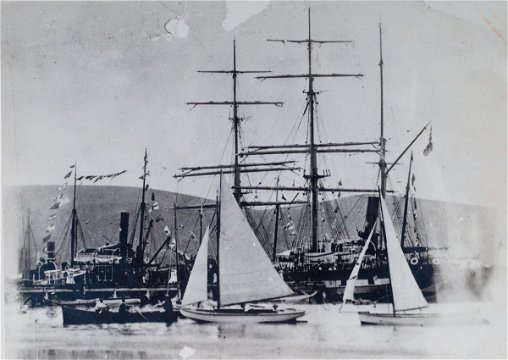

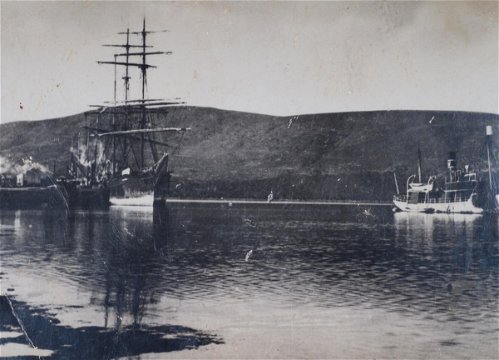
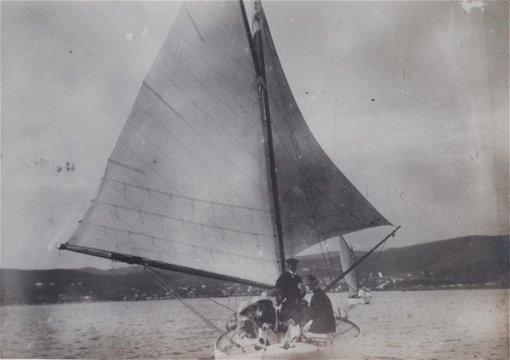


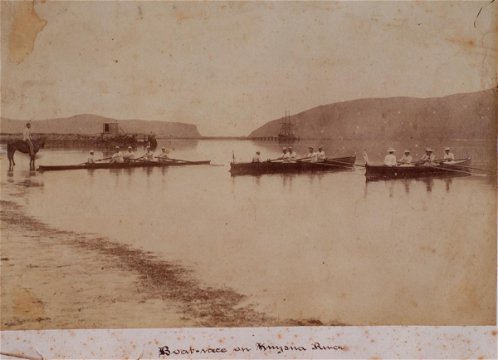
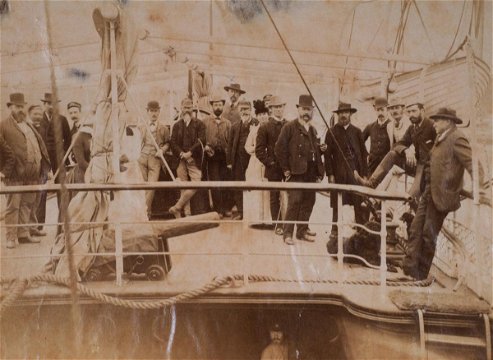
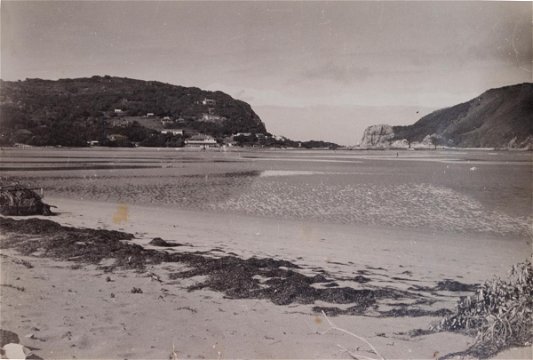
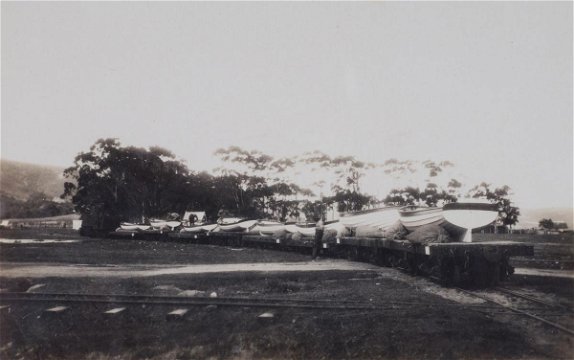
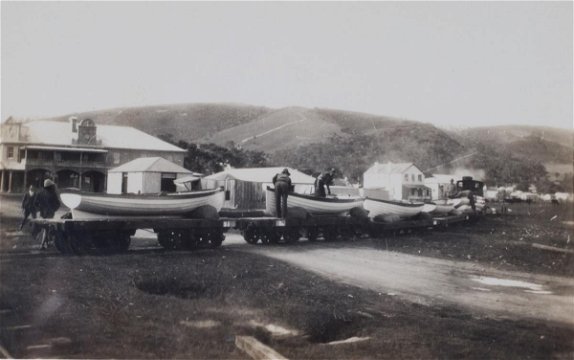
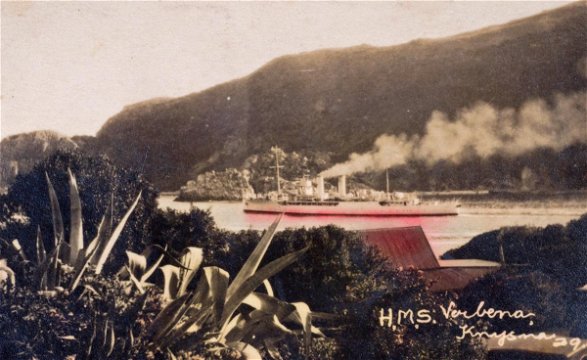

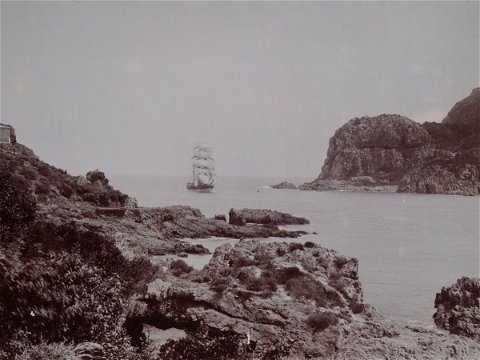
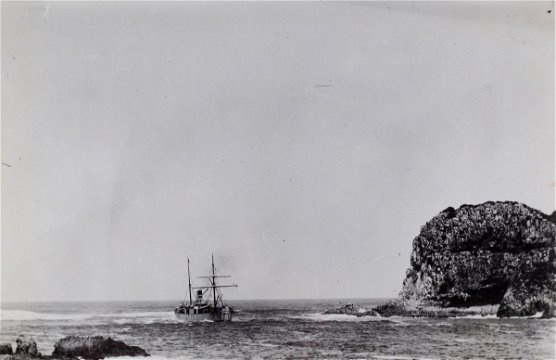
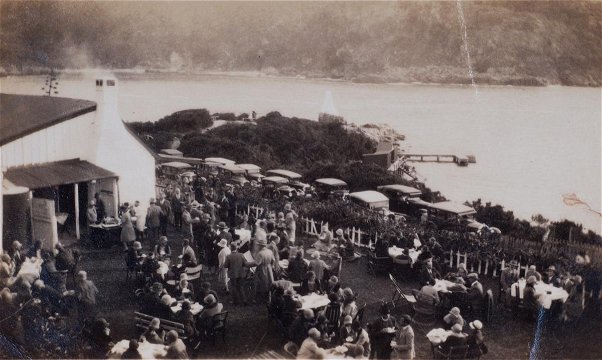
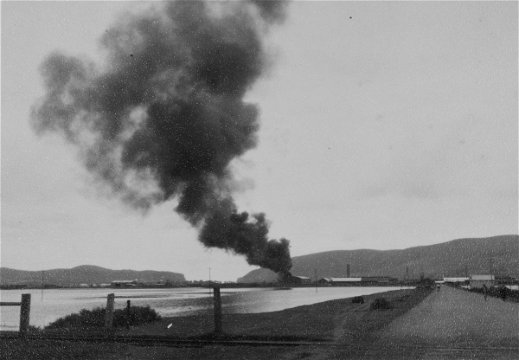
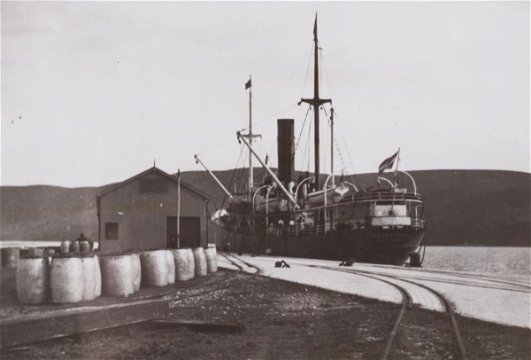

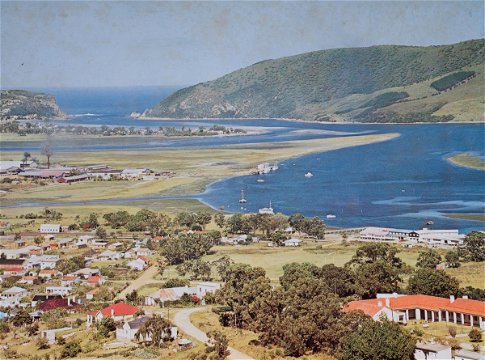

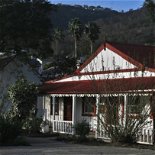


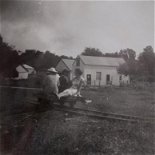


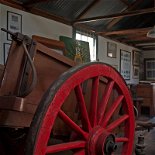
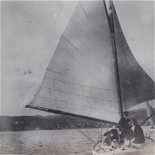


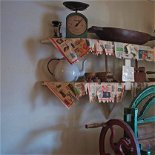
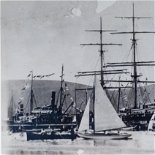

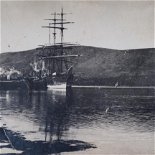


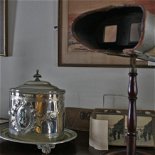
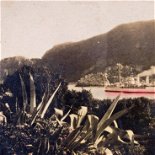
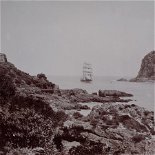
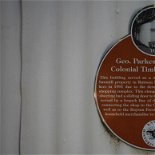
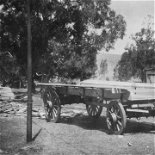
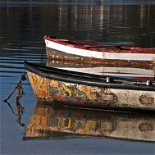

Share This Page